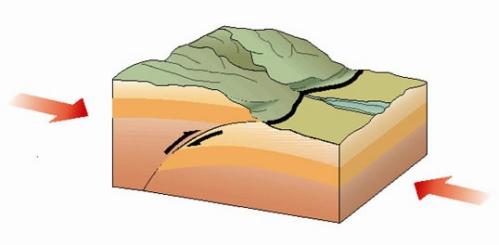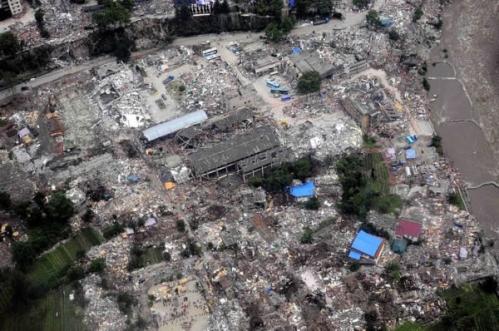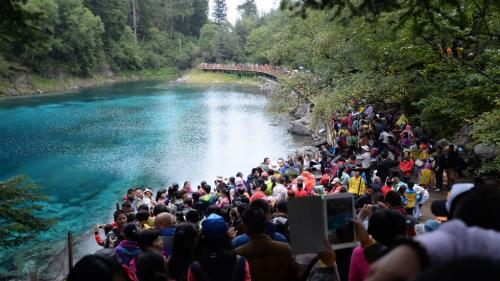Historically, China's mountainous Sichuan Province has always been an area frequently jolted by devastating earthquakes, among which include the deadly 2008 Wenchuan quake.
Given that the national park of Jiuzhaigou is a renowned tourist site whichattractsmillions of tourists annually, the loss caused by the latest calamity could be especially serious.
Up to 100 people are feared dead in Jiuzhaigou after the 7.0-magnitude earthquake hit the province, said China's National Commission for Disaster Reduction on Wednesday. 13 people have been reported dead up to now, most of whom tourists, and 175 others were injured.
Why is Sichuan so frequently stricken by earthquakes?
The Sichuan basin is situated at the east edge of a major quake-prone region covering central Asia and the Tibetan Plateau where widespread seismicity have occurred due to a collision between two tectonic plates.
It is observed that the Indian plate has been slowly moving northward in the past 50 million years, pushing into central Asia and thus pushing Tibet eastward, out of its way. The east part of Tibet, forced further eastward, overrides the Sichuan basin. In process of that motion which forms the Himalaya belt mountains, a large number of faults were building up strains, which eventually erupted in the form of earthquakes.

The east part of Tibet, forced further eastward, overrides the Sichuan basin, causing strains to accumulate / Tectonics Observatory
The effect of those quakes has proven to be devastating upon Sichuan basin, a place intensely populated by more than 100 million people. As the seismic wave traveling across the region slows down due to a heavy sedimentation of the ground level, its strength and amplitude increase. The complicated geographical condition fueled the risks of landslides and hindered the rescue effort, both aggravating the damages.
Major earthquakes which struck Sichuan historically
Historically, Sichuan has seen a dozen of earthquakes with a magnitude of 7.0 or greater according to preserved records since 1786. One of the most notorious is the 7.9-magnitude earthquake which stricken Wenchuan in 2008 with a depth of 19 kilometers and killed more than 8,700 people, destroying millions of buildings and causing an estimated 86 billion US dollars worth of damage. The trauma caused by the catastrophe still remains fresh in many local people's mind.

7.9 magnitude earthquake destroyed the city of Wenchuan in 2008 / sohu.com
Another most deadly earthquake occurred in 1933 where up to 9,300 people were killed in Diexi, Mao County during a 7.3 magnitude quake. The old town of Diexi sank into the landslide dam-created lake following the disaster.
Jiuzhaigou as a renowned tourist site
Jiuzhaigou with its 72,000-hectare reserve of national park is a famous tourist site located at the border of Sichuan and Gansu province, some 400 kilometers north of Chengdu, the capital of Sichuan Province. Hailed as being heaven on Earth, it is renowned for its fairy-tale landscapes, crystal-clear lakes and travertine waterfalls. Following a rapid development of commercial tourism, more than two million people are attracted to the place annually. The park's major sights are easily accessed on foot, via kilometres of walking trails which could be really crowded during the rush seasons.

Tourists flocked into Jiuzhaigou during the "golden week" / sohu.com
The Sichuan government said that more than 38,000 tourists were visiting Jiuzhaigou at the time of the latest earthquake. A total of 31,500 tourists have been evacuated and emergency shelters have been set up by local authorities to accommodate tourists affected.